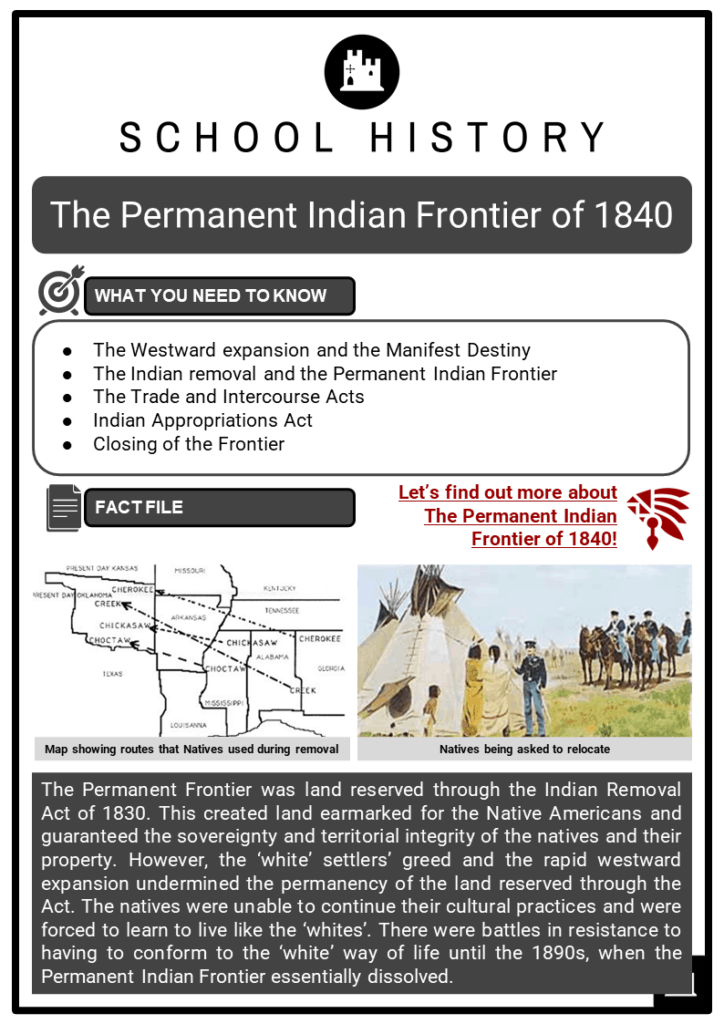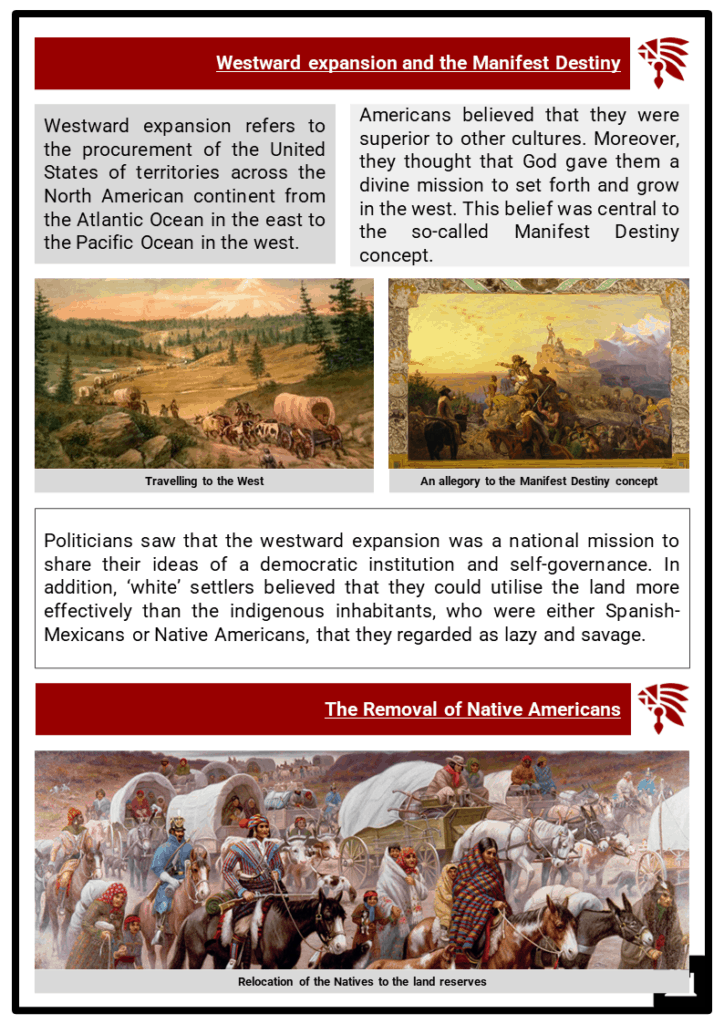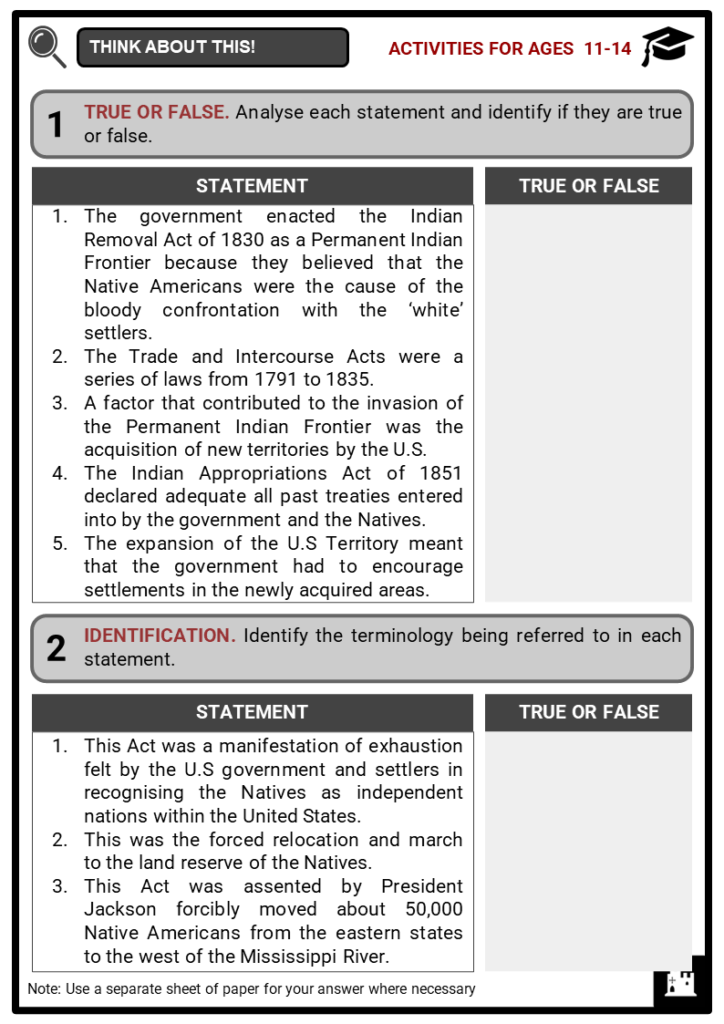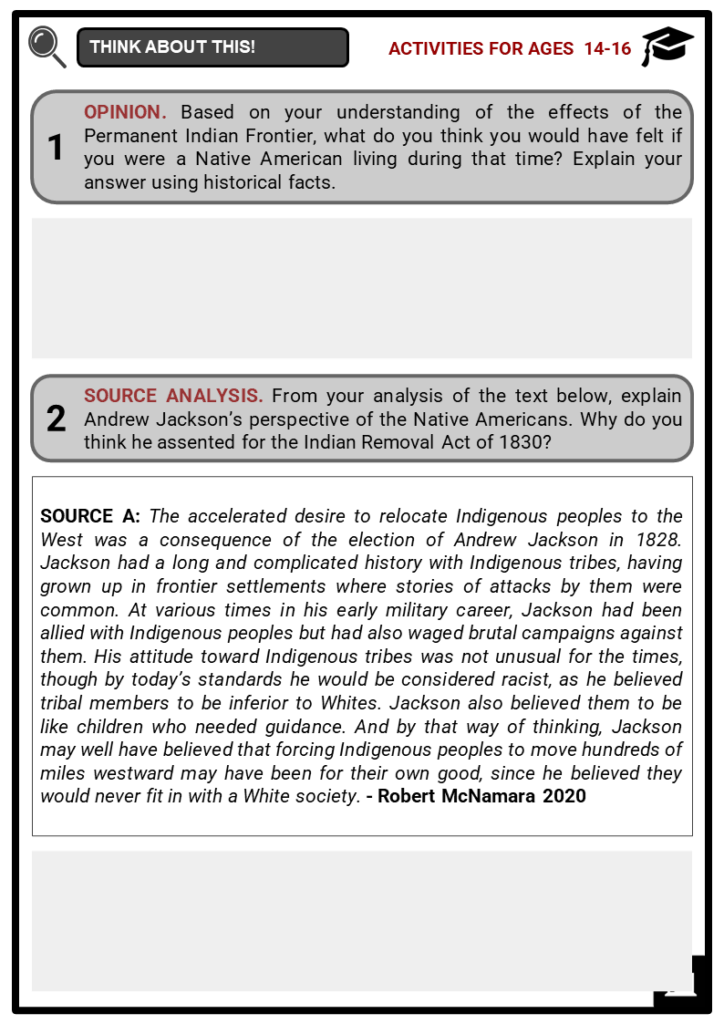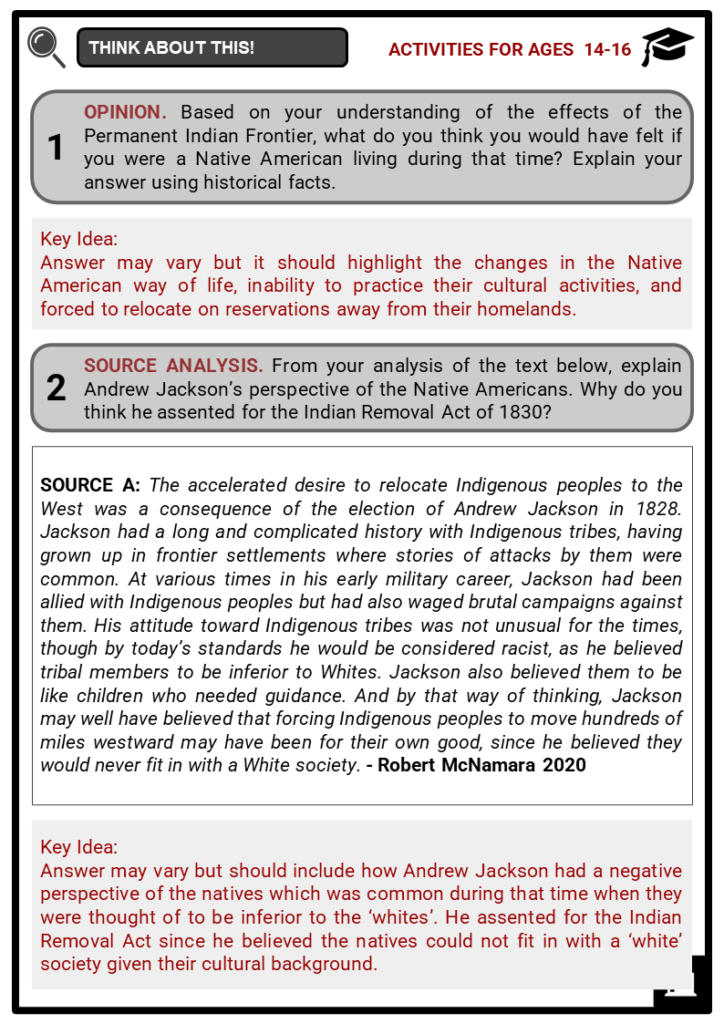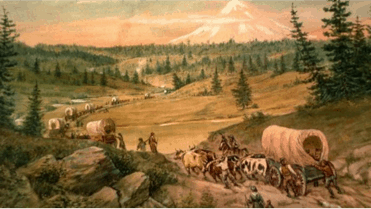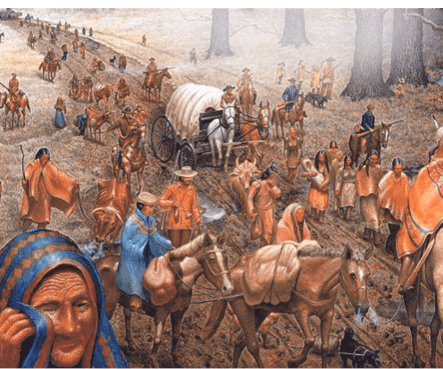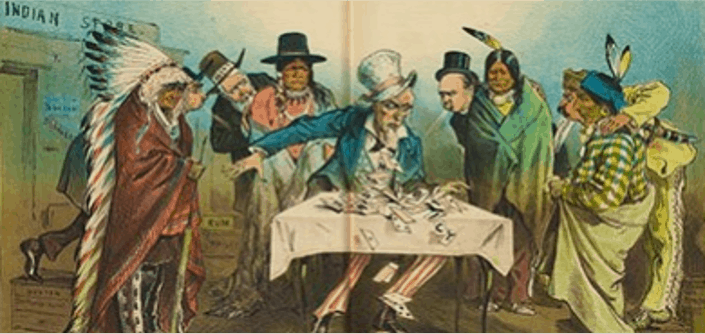Download The Permanent Indian Frontier of 1840 Worksheets
Do you want to save dozens of hours in time? Get your evenings and weekends back? Be able to teach The Permanent Indian Frontier of 1840 to your students?
Our worksheet bundle includes a fact file and printable worksheets and student activities. Perfect for both the classroom and homeschooling!
Table of Contents
Add a header to begin generating the table of contents
Summary
- The Westward expansion and the Manifest Destiny
- The Indian removal and the Permanent Indian Frontier
- The Trade and Intercourse Acts
- Indian Appropriations Act
- Closing of the Frontier
Key Facts And Information
Let’s find out more about The Permanent Indian Frontier of 1840!
- The Permanent Frontier was land reserved through the Indian Removal Act of 1830. This created land earmarked for the Native Americans and guaranteed the sovereignty and territorial integrity of the natives and their property. However, the ‘white’ settlers’ greed and the rapid westward expansion undermined the permanency of the land reserved through the Act. The natives were unable to continue their cultural practices and were forced to learn to live like the ‘whites’. There were battles in resistance to having to conform to the ‘white’ way of life until the 1890s, when the Permanent Indian Frontier essentially dissolved.
Westward expansion and the Manifest Destiny
- Westward expansion refers to the procurement of the United States of territories across the North American continent from the Atlantic Ocean in the east to the Pacific Ocean in the west.
- Americans believed that they were superior to other cultures. Moreover, they thought that God gave them a divine mission to set forth and grow in the west. This belief was central to the so-called Manifest Destiny concept.
- Politicians saw that the westward expansion was a national mission to share their ideas of a democratic institution and self-governance. In addition, ‘white’ settlers believed that they could utilise the land more effectively than the indigenous inhabitants, who were either Spanish-Mexicans or Native Americans, that they regarded as lazy and savage.
The Removal of Native Americans
- The bloody confrontation between the ‘white’ settlers and the Native Americans necessitated a government policy to address the problem. The government thought that the Native Americans were the cause of the problem and enacted the Indian Removal Act of 1830 as a Permanent Indian Frontier (PIF). The Act assented by President Andrew Jackson forcibly moved about 50,000 Native Americans from the eastern states to the west of the Mississippi River.
- The policy prohibited encroachment by the ‘whites’ into the new Native American reservation and guaranteed total non-interference of their affairs by even the government itself. Over 70 treaties outlining the government support and protection in their migration accompanied the plan.
- The federal government labelled the land in the frontier as the Great American Desert, believing no one would want to own property in the area. The U.S Army was mandated to patrol the border to ensure law enforcement.
The Trade and Intercourse Acts (1790–1834)
- The Trade and Intercourse Acts were a series of laws from 1790 to 1834, which significantly reduced the sovereignty of the Natives by limiting tribal laws to the people and not the territory. The rules also regulated the relationship between the natives and non-natives.
- The Indian Removal Act only provided for the removal of the Native Americans to a general reserve area, but there were no provisions for the exact locations and methods to be used in the relocation.
- The Intercourse Act 1834 was specifically drawn up to remedy the problem, stating that the Native Americans were to transfer to “that part of the United States west of the Mississippi and not within the states of Missouri, Louisiana, or the Territory of Arkansas.”
- Noting the diverse nature of the tribes' culture, the government promised that they would have a representative in Congress. This promise, however, was never honoured.
- The Natives resisted the removal, and the provisions of the Intercourse Act and the government resorted to removing them by force to the ‘Indian Territory’. The forced relocation and march to the land reserve marked the “Trail of Tears.” About 4,000 of the 15,000 Native Americans who were forcibly removed from Georgia died along the way.
- The policies also outlined the penalties for crimes committed against the Natives by settlers. They also prohibited settlers trespassing on the reserves for grazing, hunting, or any other reason. Despite the government’s efforts to keep things ‘balanced’, these small wins for the Natives were short-lived.
Reserved Land Lost
- By 1834, there was encroachment into the frontier fuelled by the greedy appetite for land by the ‘white’ settlers. Another factor that contributed to the invasion of the PIF was the acquisition of new territories by the U.S, including Oregon, Texas, and California. The expansion of the U.S Territory meant that the government had to encourage settlements in the newly acquired areas.
- The frontier was effectively now sandwiched in between States, and it became necessary to review the policies.
Indian Appropriations Act
- The federal government then passed the Indian Appropriations Act of 1851. This Act was a manifestation of exhaustion felt by the U.S government and settlers in recognising the Natives as independent nations within the United States. It declared null all past treaties entered into by the government and the Natives.
- Among the objectives of the Act was to ensure the Natives were unable to practice their cultural activities, such as their nomadic way of life, and they would be forced to act as the settlers did, which the government considered the appropriate American way of life.
- The Act enabled the government to pay the Natives to move out of the reserve area and free up more land for the ‘white’ settlers. It also achieved segregation between the Native Americans and the settlers. Further, by significantly reducing the property available for the Native Americans, the natives were forced to abandon their nomadic lifestyle.
- Noting that the government had offered protection to the Natives during the migration, as the Native Americans began arriving in the settlement areas, the ‘whites’ in Missouri and Arkansas demanded protection from the Native Americans. A succession of Forts from North and South along the frontier sprung up, but before then, there was no consensus among the army officials on the permanency or size of the forts.
- Zachary Taylor preferred provisional posts, Gen. Winfield Scott preferred a few critical posts, and the Sec of War John Bell wanted several small forts.
- The men reached a compromise by building a mix of small and large forts, built and controlled by the army, with Fort Jesup in Louisiana and Snelling in Minnesota and Fort Scott as central points.
- The Indian Appropriation Act mostly realised its objectives. The natives were unable to continue with their cultural practices and way of life and were forced to learn the Euro-America farming practices and subsist like the ‘whites’.
Closing the Frontier
- By the last decade of the 19th century, the west was settled by the influx of homesteaders, miners and those seeking a new life. With railroads connecting most parts of the region, new towns were established. In 1890, the U.S. Census Bureau closed the frontier due to population density restrictions.
- With the closing of the frontier, ‘white’ Americans’ escape to the wilderness also ended. More importantly, it led to the preservation of wild areas, which later resulted in national parks like Yellowstone and Yosemite.
Image sources:

